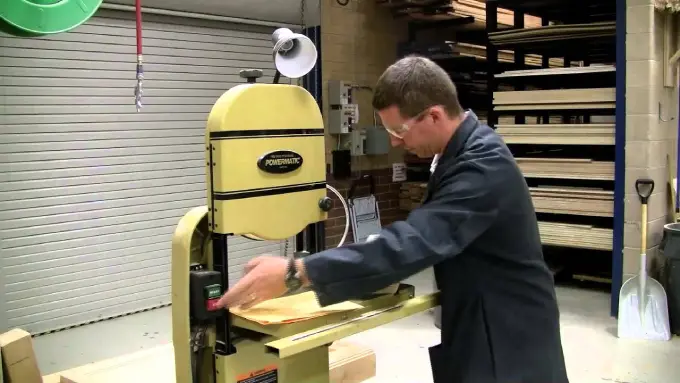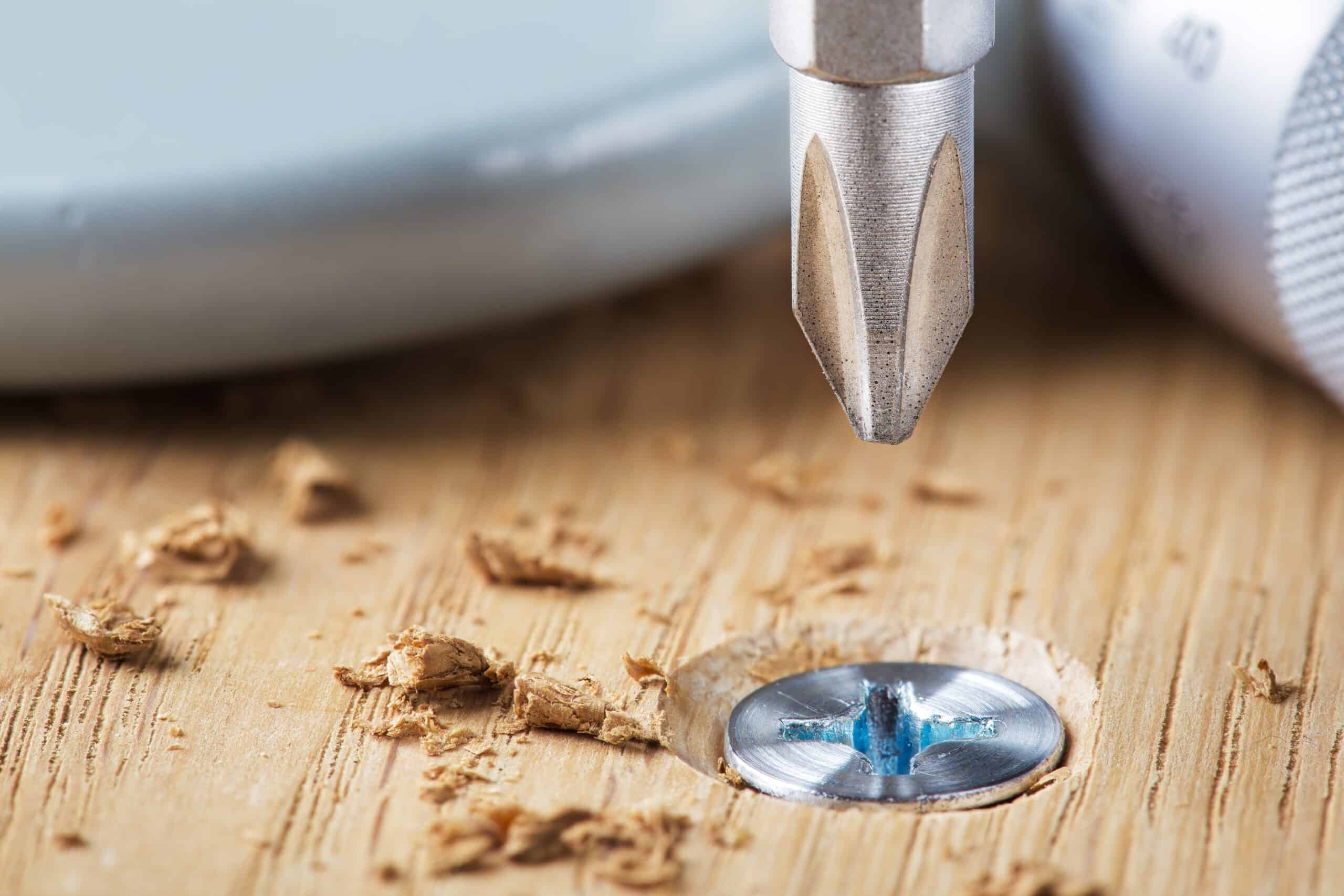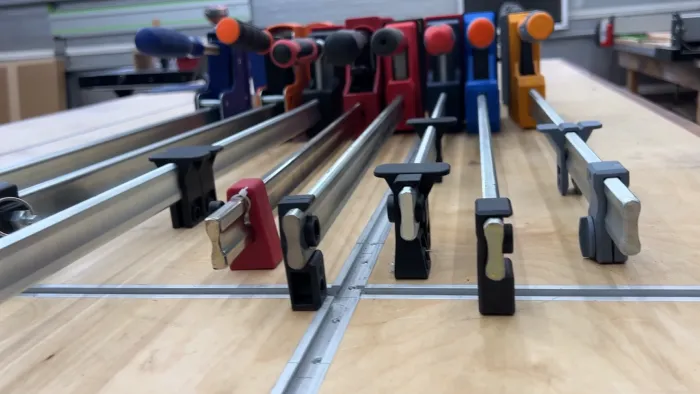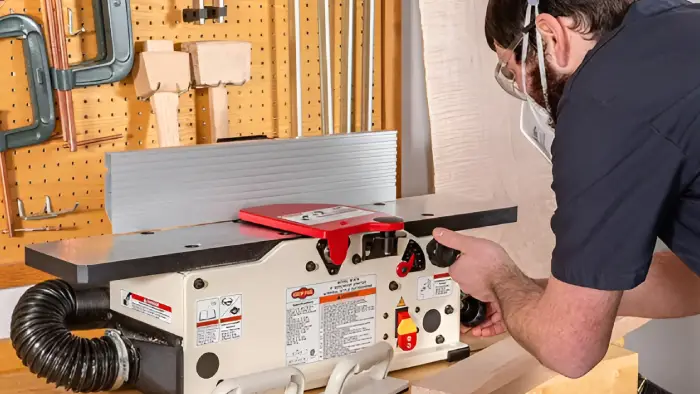WoodenuKnow.com is a participant in the Amazon Services LLC Associates Program, an affiliate advertising program designed to provide a means for sites to earn advertising fees by advertising and linking to Amazon.com and may earn from qualifying purchases.
Getting the dimensions of a band saw for accuracy is essential for any professional project. The blade length and width is perhaps the most important measurement, followed closely by the diameter of the wheels.
By measuring both and then calculating the blade length, you can ensure that you have precise measurements. Carefully verifying these calculations will double-check your work and ensure that even the smallest mistake will not put a critical cut at risk.
Today we’ll discuss what steps you need to take to get an accurate measurement and ensure that your project is successful. We’ll also discuss some common errors people make when measuring their bandsaw blades and tips on making sure your measurements are accurate every time.
Keep reading to learn more about how professional woodworkers measure their band saws.
How are Band Saws Measured (Correctly): DIY 7 Steps

Properly measuring a band saw is an essential part of any woodworker’s toolbox, as the measurements taken directly affect the performance and cut accuracy of the saw. With accurate measurements, you can ensure your band saw is properly set up and running.
Here’s a detailed guide on how to measure your band saw:
STEP 1. Measure the Blade Length
Measuring the blade length of a band saw accurately is key to understanding how well your saw will perform. To do this, use a measuring tape with markings corresponding to the blade’s size and place it perpendicular to the saw blade.
Curved and irregularly shaped blades may be easier to measure by tracing them onto a piece of paper, then measuring them with a ruler or other measuring device. Taking these extra steps can help ensure you get an accurate measurement you can rely on for the excellent performance of your saw.
STEP 2. Measure the Blade Width
Measuring the width of a bandsaw’s blade is relatively simple and can be done using either an unmarked ruler or a caliper. When using an unmarked ruler, ensure that it is level with the blade before taking measurements.
Calipers should be used when exact measurements are necessary, as these provide more accurate readings than notched rulers do.
STEP 3. Measure the Diameter of the Wheels
For accurate measurements, you have to find the center of the wheels. This is done by laying out two pieces of chalk or string on opposite sides of the wheel and drawing lines where they intersect at 90 degrees.
Once you have determined the centering points, you can use calipers to find the diameter at each point. Ensure not to press too hard to prevent scratches on your wheels’ surface materials from occurring inadvertently.
STEP 4. Calculate the Blade Length
Once all measurements have been taken and recorded, use them to calculate and find out what length blades best suit your machine by using this simple equation: (R1 x 3.1416) + (R2 x 3.1416) + (2 x D).
By plugging in all applicable numbers here, R1 is the radius of one wheel, and R2 is of another. You’ll get an exact measurement that reflects how long a given blade must be if it’s going to fit correctly on your particular machine setup.
STEP 5. Verify the Measurement
Verifying measurements is critical in ensuring the accuracy of the cutting. Once all the data has been collected, take the time to double-check your results and confirm they align with other sources or online calculators.
If any deviations exist, it’s essential to make corrections before making any cuts. This simple step will help guarantee everything goes according to plan and save you time down the road.
STEP 6. Install the New Blade
Now install a new blade on your band saw to ensure it is correctly sized. This process may require some care and attention as incorrect installation can lead to severe damage or injury. Remember to follow manufacturer instructions closely when installing the new blade on the bandsaw.
Start by ensuring that all components fit snugly and all parts are correctly aligned. This includes checking for loose screws or bolts, ensuring that all clamps are tightened correctly, and lubricating moving parts before assembly.
Once installed, turn on your machine briefly without cutting material to ensure everything is running smoothly before continuing work on your project.
STEP 7. Check the Blade Tracking
Blade tracking is essential in getting consistent results when working with a band saw. If it isn’t right, you may experience erratic performance and unwanted vibrations, affecting accuracy and safety while working on your projects.
Check to track by inspecting your blade closely. If it isn’t straight, adjust according to manufacturer instructions by adjusting either one side of the drive wheel or both sides at once, depending on the design of your machine’s tracking system.
What to Consider When Measuring Band Saws?
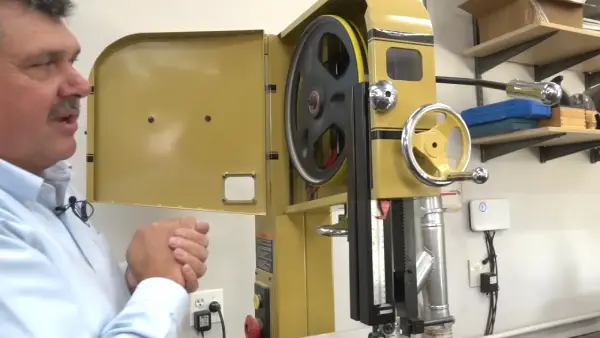
Band saws of all sizes and types must be measured to ensure accuracy, safety, and effectiveness during the cutting process. Here are some things to consider when measuring your bandsaw:
Blade Length
Blade length is a major factor to consider when assessing the performance of a band saw. Longer blades will provide better power and cutting capacity than shorter blades and less risk for instability during the cutting process.
Therefore, one must consider the intended application before selecting any blade length to optimize results and maintain safety on each job site.
Blade Width
In addition to length, width is also an essential factor when measuring a band saw. Wide blades typically provide more stability while cutting than narrow blades due to their increased strength and resistance against bending or warping under pressure.
But wider blades also require more horsepower and torque to turn them at higher speeds which can be difficult for some machines. Thus, selecting an appropriate blade width should take into account both the desired cutting performance as well as the capabilities of the machine itself.
Wheel Diameter
The diameter of a band saw’s wheels is another important measurement that should not be overlooked when assessing a machine’s performance potential. Larger-diameter wheels provide greater torque at lower speeds but require more space overall.
Conversely, smaller-diameter wheels may lack torque but take up less space and cost less. Ultimately choosing between large or small diameters depends on what job needs to be done and other factors such as budget restrictions or available workspace size.
Blade Guides
Blade guides are essential when calibrating a band saw as they provide support, ensuring the blade does not sag or bend to the side while running at maximum velocity.
These can usually be adjusted along either side of the blade, allowing blades of varying sizes to fit seamlessly without making contact with each other which could cause friction and slow down their performance.
Such precision and versatility make blade guides an irreplaceable asset for any band saw setup.
Cutting Capacity
When measuring a band saw, the cutting capacity is an essential factor to consider. It determines how deep the saw can penetrate the material without encountering something solid, like metal or building frames inside walls.
The more powerful the band saw, the higher its cutting capacity. This power comes from larger blade widths and bigger wheel diameters, allowing for better results and reducing strain on motor and belt drive train components from teeth with insufficient torque needed to push through the material.
Why is it Essential to Get an Accurate Band-Saw Blade Length Measurement?
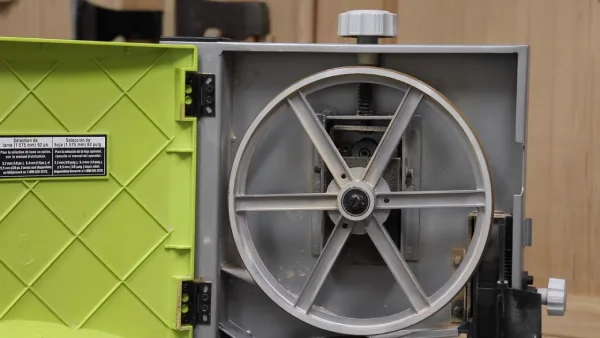
A bandsaw blade’s length measurement is the most important factor in ensuring quality cuts and long-lasting performance. An accurate bandsaw blade length measurements are required for the following:
Proper Blade Tension
The key to achieving accurate results with a band saw is the proper blade tensioning. This amount of tension needed depends on various factors such as material type and size.
An inaccurate length measurement may result in insufficient or excessive tension, leading to poor cutting performance or even breakages. For this reason, getting precise measurements of bandsaw blade length is essential before attempting any cutting operations.
Consistent Cuts
A properly measured band saw blade would make consistent cuts without side-to-side deviation across the workpiece. This will help ensure accuracy when working with intricate shapes or tight tolerances requiring precise cut depth and width control. Incorrect blade measurements can result in wavy cuts, reducing cutting quality and efficiency.
Longer Blade Life
Implementing the proper measurements allows a band saw blade to enjoy a much longer life. Taking accurate measurements, sharpening and replacing blades as needed, and following other good operating practices can drastically extend a blade’s life expectancy.
Utilizing high-quality blades designed for wear resistance will promote a longer blade life than lower-quality alternatives.
User Safety
Accurately measured blades are safer to use than those with incorrect lengths due to their reduced tendency for breakage or quick dulling from inadequate tensioning levels.
Working with an incorrectly measured band saw can increase the risk of kickbacks or other sudden movements that could jeopardize user safety if proper caution isn’t taken when operating it.
Cost-effective
There’s nothing worse than investing in an incompatible replacement and switching it out quickly. Taking detailed measurements upfront will ensure you find the right fit that meets all specifications and application requirements.
By committing to accurate measurements, you can save time and money by opting for cost-effective options that match your needs perfectly.
What are Some Common Mistakes People Make When Measuring a Band Saw?
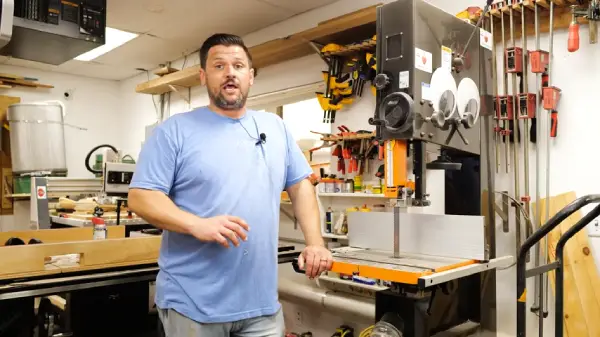
When measuring a band saw, these are some mistakes people make:
Not Measuring the Blade Correctly
Ensuring that the correct length of the band saw blade is properly measured is paramount in maintaining consistent cutting accuracy and avoiding premature wear on other components of the saw.
Being slightly off can lead to issues from noticeable damage caused by contact with the guide bearing to damaging, overheated internal parts. It is a simple but essential task, so double-check the length before mounting any blade on the saw for the best performance.
Forgetting to Account for the Blade’s Thickness
Measuring the band saw accurately is crucial when preparing a precise cut. A mistake often made in this process is forgetting to compensate for the blade’s thickness. Ignoring the blade’s thickness in your measurement can cause you to select an incorrect size and set yourself up for failure.
Excessively long blades could lead to difficulty when maneuvering, while short blades might not be able to finish the job properly, which could damage your machine. Always factor in the blade’s thickness to ensure your measurements are flawless and your machine remains safe.
Measuring the Wrong Wheel Diameter
When measuring the diameter of a band saw wheel, it is important to use the outer circumference measurement for accuracy. Taking a diagonal measure may seem like it will yield an accurate result, but this is often false due to variations in the ratio of circumference to diameter from one wheel size to another.
Not Checking the Blade Tracking
Blade tracking is another factor that must be considered when measuring a band saw. Blade tracking refers to how straight and smoothly your blade travels along its path without slipping off course or binding upon any part on its route around either wheel or guide post-bearing surfaces.
Achieve Perfect Craftsmanship: Know the Right Measurements for a Band Saw
Measuring a band saw correctly is essential for woodworking or any other intricate cut project. Although, it’s very easy to make mistakes when taking measurements.
Still, with a few basic steps, anyone can take precise measurements for their blade length without worrying about accuracy or wasting materials due to incorrect sizing.
It starts with measuring the blade length and width and accurately calculating the wheel diameter. Once you have these measurements, you must verify them before installing your new blade to avoid any mistakes. By mastering the basics of band saw measuring now, you’ll save time and hassle later.

